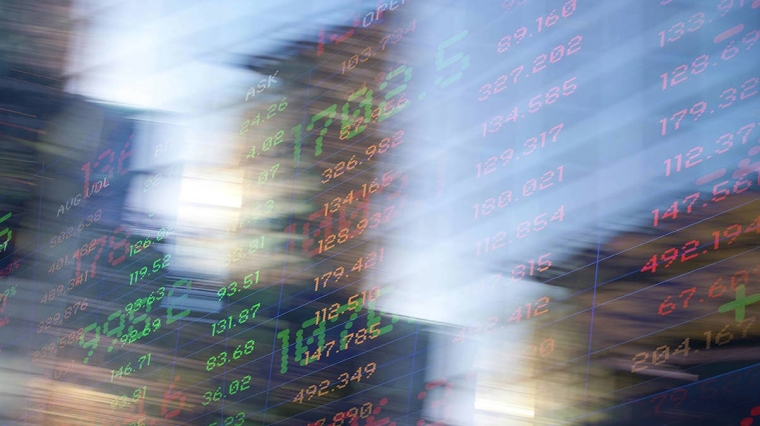
As the world becomes more volatile and confusing, policymakers, business leaders, and investors will need to rethink the mental models they use to analyze the global economy. Specifically, they should pay attention to three structural dynamics that are altering the global landscape: capital flows, demographic shifts, and political ideology, which are ushering in a more fragmented and siloed world.
Changes to capital flows are driven largely by regulatory requirements (such as the US ban on investments in China) and investors’ pursuit of new opportunities for higher returns across sectors and regions. The United States currently represents nearly 70% of stock-market capitalisation worldwide, attracting more than 70% of flows into the $13 trillion global market for private investments, which include equity and credit. This is true despite the recent sell-off. The US stock market is where investors can generate the most attractive returns, because the US is a global innovation leader with broad, liquid, and deep capital markets.
But global debt has reached 237% of world GDP, raising concerns about who owns outstanding liabilities and the extent to which there is hidden leverage in the global financial system. The US government alone owes $36 trillion (or 124% of GDP) – a large proportion of which is held by China, with which relations are strained.
Moreover, hidden leverage and the shadow banking sector’s debts could become a problem. According to S&P Global, shadow banks held $63 trillion in financial assets at the end of 2022 – representing 78% of global GDP. And further analysis has also shown that in 2024, shadow banking accounted for 70% of US mortgage origination and leveraged lending. Investors and business leaders will need to ask themselves who holds what debt, and where debt obligations and major pools of financial leverage may lie.
The second big worry concerns demographics. The global population continues to grow at a rapid clip, with the United Nations forecasting that there will 11.2 billion people by 2100, up from 8.1 billion now. Already, almost 90% of the world’s population lives in poorer emerging markets, and economically poorer regions – such as Africa, India, and the Middle East – are projected to experience population growth at or above the replacement rate of 2.1 children per woman. Thus, these regions will continue to skew younger. Across Africa, 50-60% of the population is below the age of 25, compared to only 20% across the OECD.
Meanwhile, other countries are aging rapidly and registering lower birth rates, with forecasts for Europe and China pointing to marked population declines. According to Eurostat, the European Union’s population is projected to peak at 453.3 million in 2026, before gradually decreasing to 419.5 million by 2100. And UN data suggest that China’s population will fall below 800 million by 2100, from 1.4 billion now.
Such trends have far-reaching implications for global demand and production across a wide array of commodities such as foodstuffs and energy. For example, India, with its large, poorer population, is still heavily dependent on coal and fossil fuels, as compared to renewables.
Demographic changes will also alter financial portfolios as aging populations switch from being capitalists (willing to take on risk) to rentiers (desiring stable, predictable fixed incomes). But markets will also have to calibrate for unprecedented intergenerational wealth transfers from baby boomers to millennials. Cerulli Associates estimates that this could amount to $84 trillion by 2045.
Finally, the ideological splits across countries and regions must be factored in. The breakdown of multilateralism and the fragmentation of trade, capital flows, migration, and ideas are all being priced in, and policymakers and business leaders will have to keep these trends in mind. America’s largest multinationals still generate more than half of their revenues outside the US. But they now need to consider what strained US alliances and traditional trading relationships will mean for their businesses.
For business more broadly, deglobalisation has forced a shift toward more centralised procurement, hiring, and trade in goods and services. It is also jeopardising carry trades (borrowing cheaply in New York and London to invest in higher-yielding regions) and making it harder to repatriate profits.
In the near term, the Trump administration’s tariffs and deportations could affect salaries and fuel higher inflation in consumer goods, wages, and prices across sectors. Higher inflation, moreover, will likely drive up the cost of capital, which could suppress business investment. And over the long term, deglobalisation and technological advances – such as AI and quantum computing – will further entrench today’s ideological splits.
Geopolitical fissures have already raised big political questions. There is a tug of war between state capitalism and market capitalism, and over the reconfiguration of alliances and country groupings. New blocs such as the BRICS+ are vying for global influence and looking to circumvent traditional multilateral institutions. The BRICS+ countries already represent 45% of the world’s population and 35% of its GDP, and they are playing a growing role in the pricing and trade of many internationally traded goods and commodities. Such developments are making it harder for countries to achieve global alignment; even previously celebrated efforts like the United Nations Climate Change Conferences have been hobbled.
As global growth slows, trade, finance, religion, energy, AI, and immigration are all being weaponised, leading to much greater complexity that will make it harder to anticipate policy outcomes. As a practical matter, added complexity and reduced visibility will likely shorten the time horizons for crucial decisions about allocating capital and human resources.
Rather than looking five years ahead – typically assumed to be the length of an economic or business cycle – investors, business leaders, and policymakers may need to think more in terms of the next 18 months. Amid so much volatility, decision-makers will have to focus on adaptability. No one can afford to commit to long-term strategies based on regulatory, geopolitical, or economic conditions that might change overnight.
Dambisa Moyo, an international economist, is the author of four New York Times bestselling books, including Edge of Chaos: Why Democracy Is Failing to Deliver Economic Growth – and How to Fix It. This content is © Project Syndicate, 2024, and is here with permission.
1 Comments
This surely is the statement that should concern us all
'Moreover, hidden leverage and the shadow banking sector’s debts could become a problem. According to S&P Global, shadow banks held $63 trillion in financial assets at the end of 2022 – representing 78% of global GDP.'
I reckon enough to sink the global economy.

We welcome your comments below. If you are not already registered, please register to comment.
Remember we welcome robust, respectful and insightful debate. We don't welcome abusive or defamatory comments and will de-register those repeatedly making such comments. Our current comment policy is here.